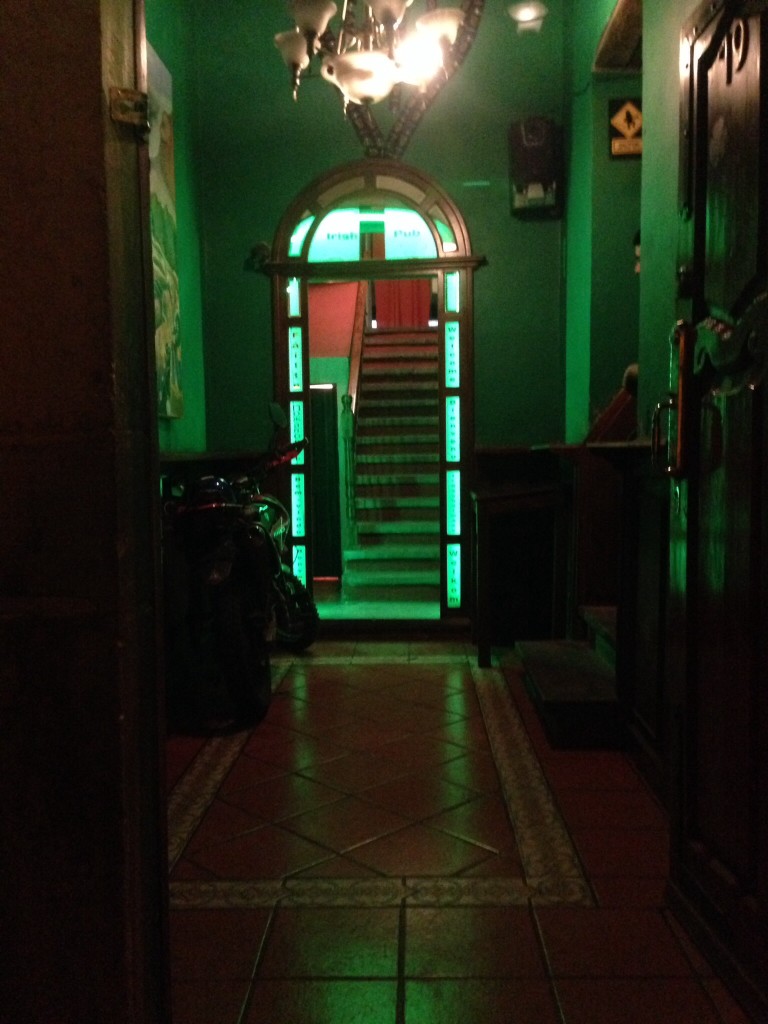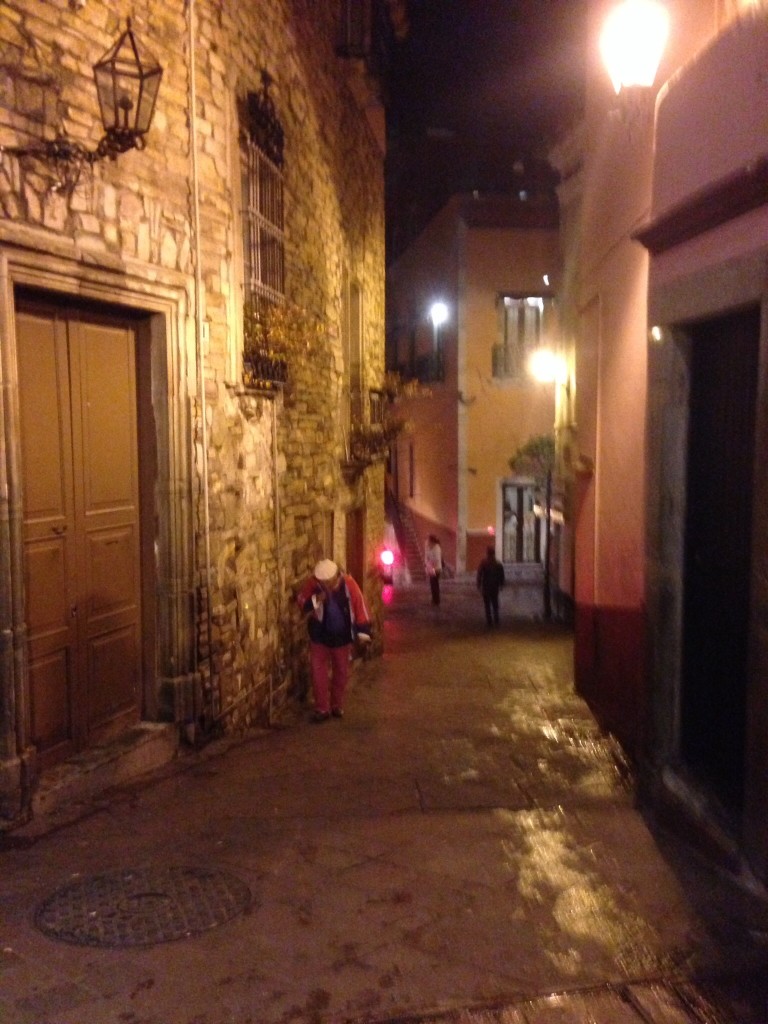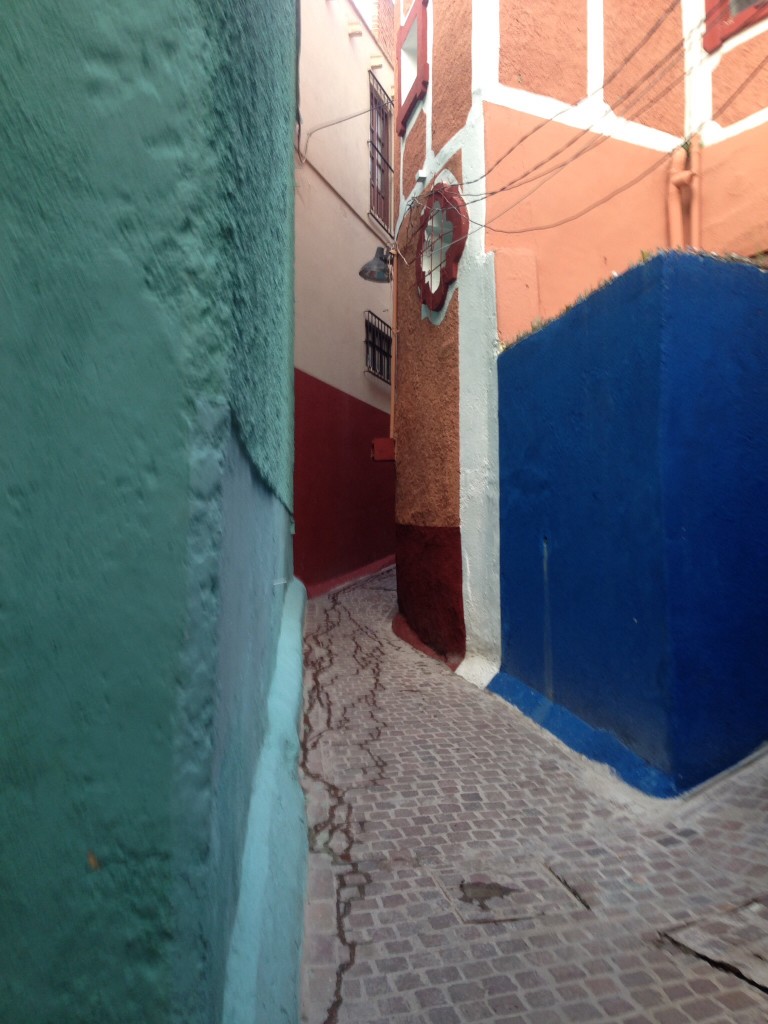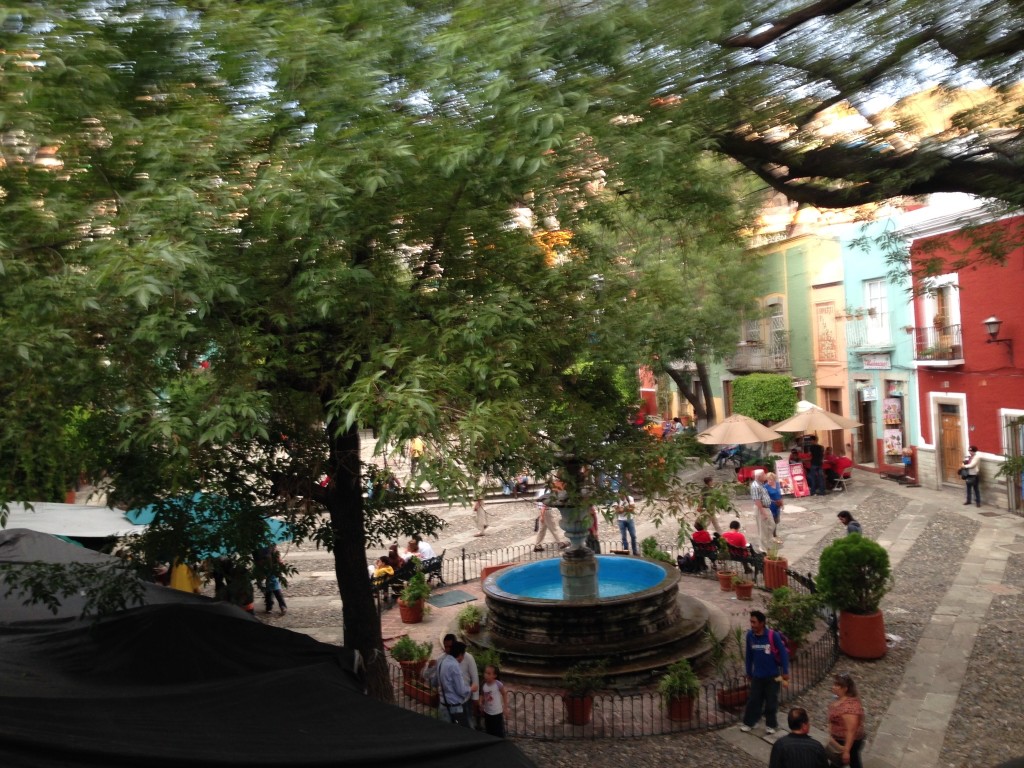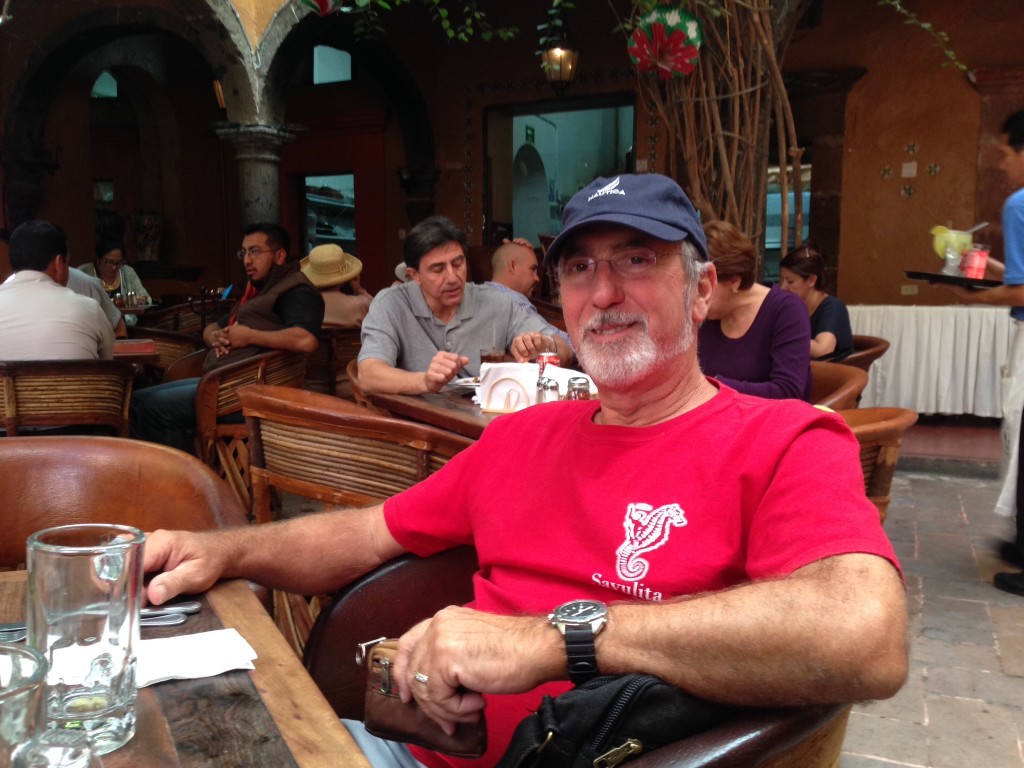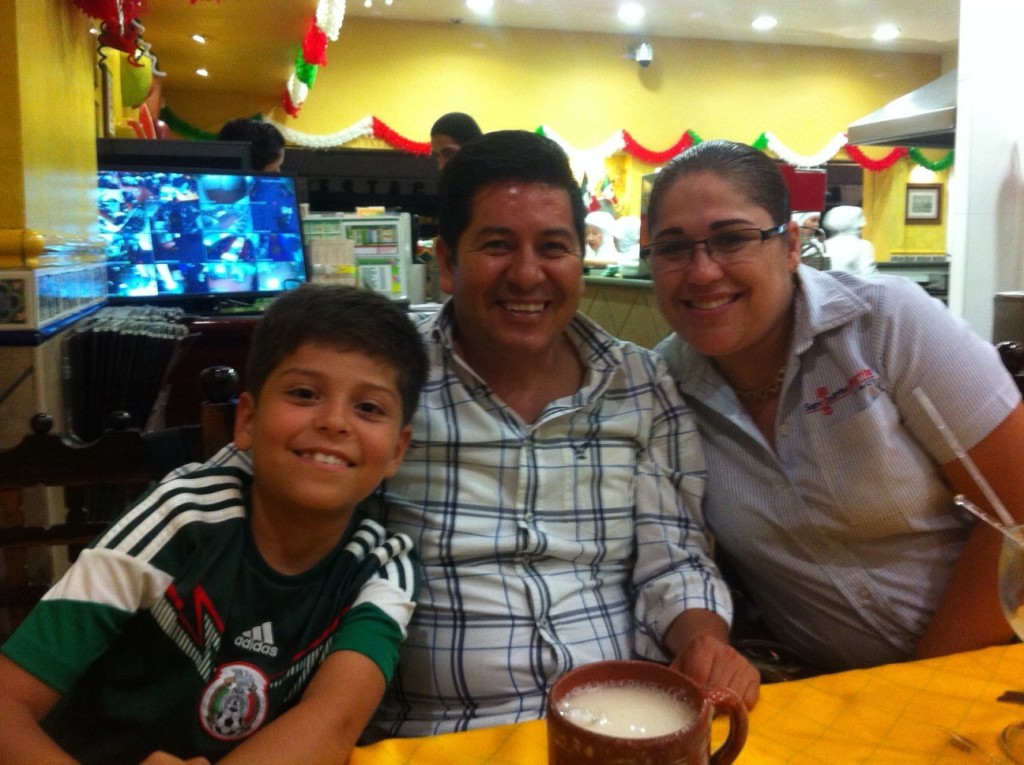GUANAJUATO
Guanajuato is so charming that I could swear I was in a make-believe world. It is built on hills like Taxco, but has far less traffic because most cars take one of the 28 tunnels under the hills to get around. Like Taxco, it was founded by the Spanish in the 1500’s as a mining center so it retains vestiges from 500 years ago, including several historic buildings. Pedestrian walkways are everywhere, especially the narrow kind between colorful buildings that decorate the hillsides without interruption. Green patches of plazas are scattered abundantly, the most prominent of which is the main plaza adorned in carefully manicured laurel trees that provide shade and a feeling of entering the queen’s garden in Alice in Wonderland. The main plaza is surrounded with everything from fine restaurants with outside dining to barely-sheltered metal tables where beer is chugged while soliciting yet another rendition of “Guadalajara” from one of many Mariachi groups roaming the square. The streets are very narrow and made from brick, bordered on both sides with walkable sidewalks. The many universities found in Guanajuato produce a student population that supports lots of sites for musicians, theater, inexpensive to fine dining, street food, lots of street fares, and colorful characters.

The University of Guanajuato. They say that nearly 20,000 of Guanajuato’s 70,000 population are students

A couple of fellas who hung out for too long at the bar, inside the eccentric Clave Azul Restaurant and Tavern
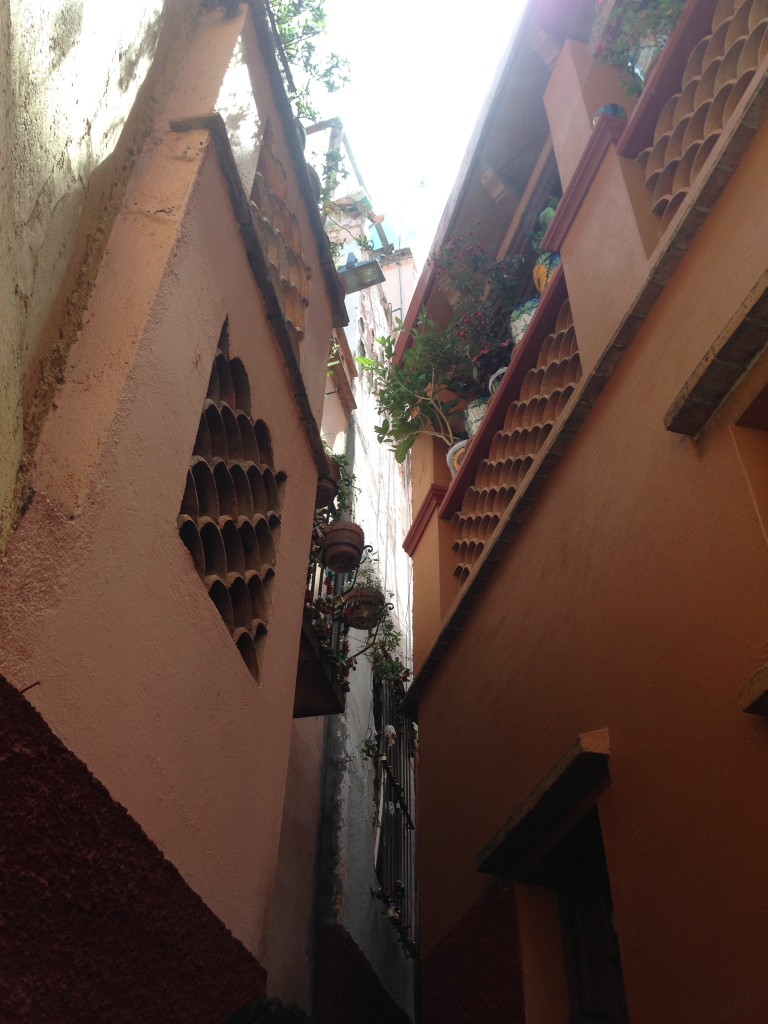
So, these two balconies can be seen by looking up from the narrow walkway called Callejon del Beso. Legend has it that Carmen and Luis were secret lovers, and that Luis rented the house on the right with the flowered balcony so he could kiss his love, Carmen, across to the wrought iron flowered balcony on the left. But upon discovering the two embraced across the balconies, Carmen’s jealous father stabbed Carmen in a rage. Luis continued the kiss until her lips went cold. A Mexican Romeo and Juliet, made all the more believable because there are so many such Callejónes all over Guanajuato.
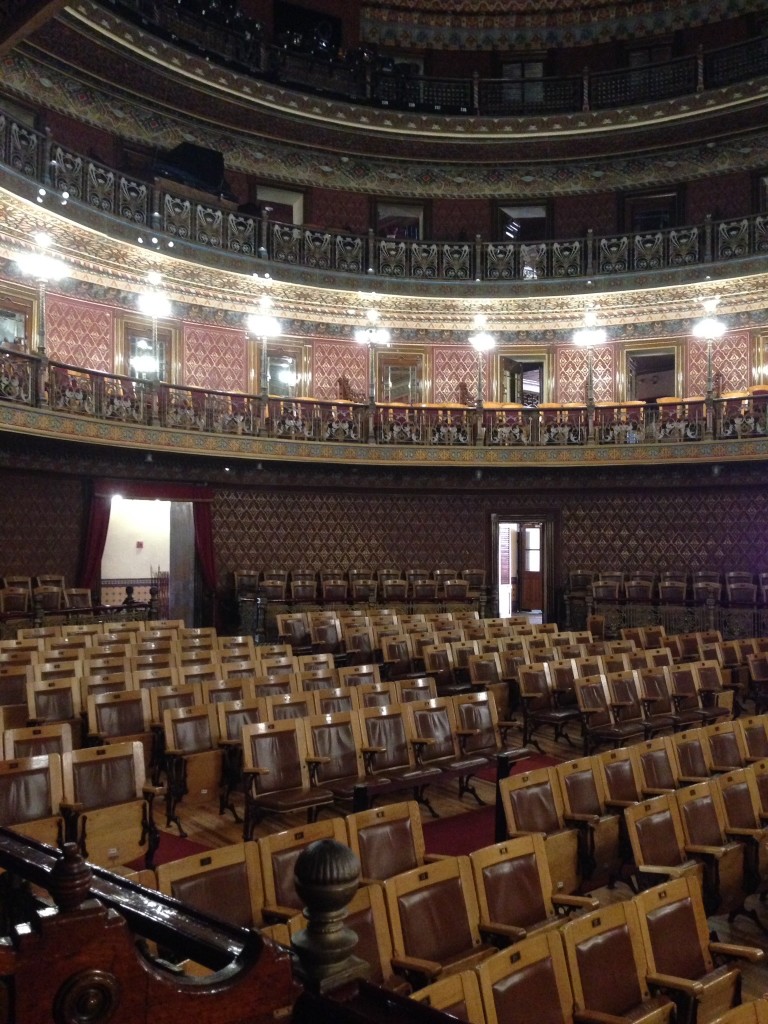
Inside the Teatro Juárez, on the main square in Guanajuato. This opulent building was constructed by Mexico’s last dictator, Portfirio Díaz, before the 1910 Mexican Revolution

Rick alongside the main square in Guanajuato, with its perfectly coiffed laurel trees providing shade for nearly the entire square. Sidewalk cafes surround the square, serving everything from Alta Cocina Mexicana to cold beers washed down with live Mariachi songs
Guanajuato holds the International Cervantino Film Festival every year in October, an event which attests to Guanajuato’s desirability as an arts center and also helps to perpetuate a society that can sustain artists. We missed it by just a couple of weeks, but caught the city preparing for the event, which showed it at its finest. This town was one of my favorites. Oh how I wish I could have known about this university town for a semester abroad when I was in school – it would have been a ball! As it was, we were reluctant to leave but were looking forward to our next destination as well.
SAN MIGUEL DE ALLENDE
This is the famous Mexican City where ex-pats from the United States choose overwhelmingly to retire. It can be found on list after list of the “best cities in the world to retire.” It is far from the bustling crowd of any major city, but is quite cosmopolitan. The number of ex-pats who have taken up residence here are estimated in the 10s of thousands; they are everywhere. You do not need to speak Spanish, as the town has accustomed itself to a bilingual environment. The ex-pats who live here are not your typical tourist, though. The ex-pats do a lot for the town – there are probably more charities per capita in San Miguel than in any other city throughout all of Mexico. They are deeply interested in the culture of Mexico and the people of their city. There is also a large “new-age” or modern hippie contingent: our first day, as we meandered about the zocolo, a young women in her early 30’s asked us if we were there to help volunteer to put on “earth day” and reminded us to recycle our trash. Psychics, yoga classes, healing through meditation and herbal medications, massage, and a multitude of other ways to gain inner peace abound in San Miguel de Allende.
We found an inexpensive pension through Lonely Planet but when we got there, the owner decided we were better suited for improved accommodations for the same price that he had in a home he had just started to rent a few blocks away. How nice! We had a lovely room with a door that locked, but access to the rest of the house as well, including a rooftop for nightcaps, and a kitchen, although we didn’t find it inviting enough to use. It was maybe an eight block walk to the Zocolo from our accomodations – short enough not to need to take a taxi, but far enough that you didn’t stop by the house to pick up something you forgot. That worked out fine; we just planned our day and left the house with everything we needed.
There was a walking tour advertised in Lonely Planet so we managed to take advantage of it. A gringo who had moved here with his wife 8 years ago was the tour guide. He and his wife were retired international american school teachers and had lived all over the world. They we so sure San Miguel would be their retirement home that they bought a house after only one week in town, and are still there. This man, albeit he spoke very broken Spanish with a painfully inaccurate accent, belied an enthusiasm about Mexico that was contagious. I just loved his love for Mexico, something that after our several weeks of inland tour, Rick and I shared with equal excitement.
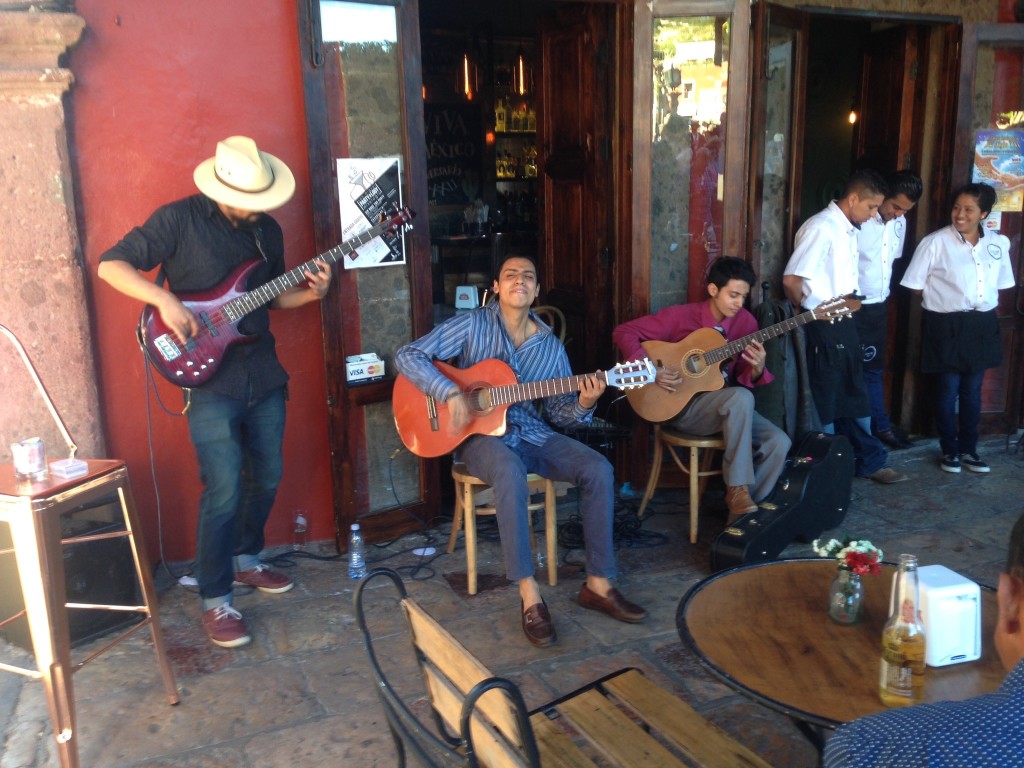
A band made up of a couple of young brothers, playing Strunz and Farrah`like Spanish guitar in a café during the day along the Zocolo. Rick adored them.

A café we found off the beaten track in San Miguel. The proprietor was Mexican but spoke English impeccably and was obviously a close friend of the largely grey-haired clientele. They joked amongst themselves about who would be the next to die!
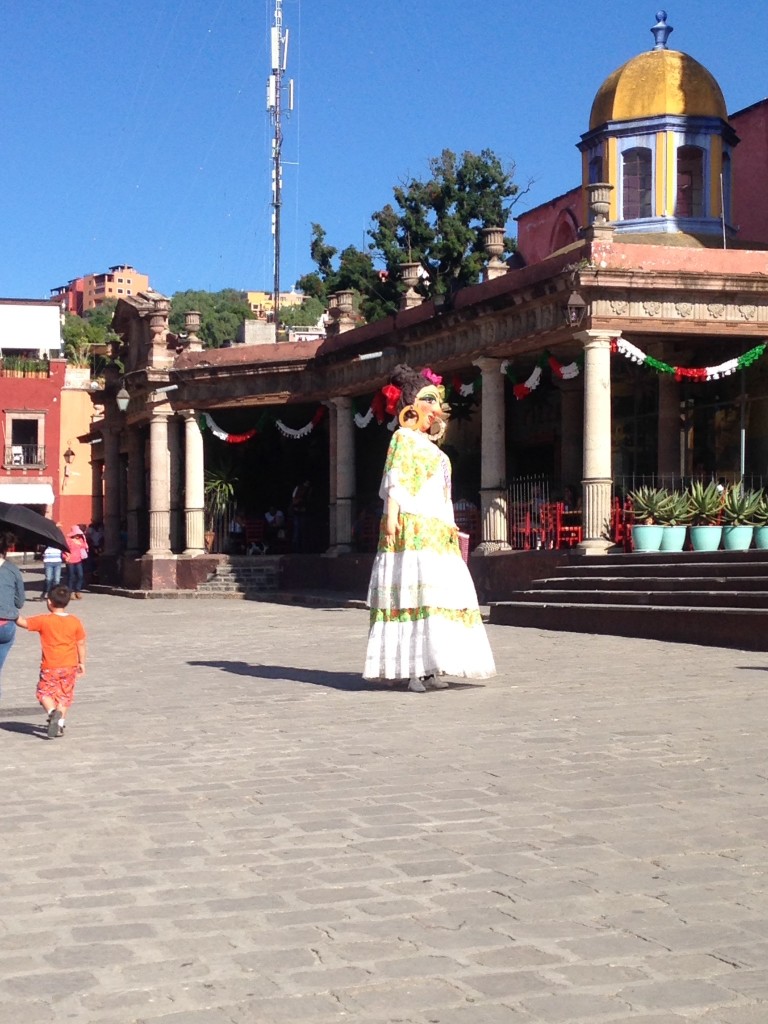
An oversized costumed person on stilts roams the San Miguel Zocolo, playing with children and looking pretty, lending a magical and festive aire to this Pueblo Mágico.
We both really enjoyed San Miguel and could see ourselves spending more time there. It felt quite safe and oddly familiar because of all of the ex-pat influence, but at the same time, proudly Mexican. The town’s primary industry is catering to the full time ex pat residents, as far as we could tell, and maintaining its reputation as a Magical City, although recently its status had been elevated to a World Heritage Site, since a few of its buildings were credited with housing the conspiracy to overthrow the Spanish rule in 1810. The interrelationship between the supportive ex-pats and the Mexicans who have grown up in this town seems to be a compatible and supportive one; it gave us both a good feeling.
GUADALAJARA
Nearing the end of our inland trip, we promised our Mexican family friends we would stay with them in Guadalajara on our way back to Puerto Vallarta. We met them in one of the swimming pools in the resort where our marina is housed. By the time they left Nuevo Vallarta, they had bestowed the title of “abuelos” (grandparents) on us for their children.
This family amazes us. They own an auto parts distributorship, have two adorable children in private schools aged 5 and 10, live in a two bedroom apartment near the historic center of Guadalajara during the week and visit their family farm on the weekends, complete with a full-time caretaker of their several dogs. They employ two additional full time domestic helpers, and they are in the process of buying a home in Guadalajara. Meanwhile, they rented the apartment next to their for family and friends to visit. We stayed in their extra apartment! They insisted on feeding us three meals per day during our whole visit, includkng when our friend Barbara came to visit us.

Our friend Barbara happened to be visiting Guadalajara when we were going to be there, so we had an opportunity to see an old friend. A welcome sight after a month of strangers.
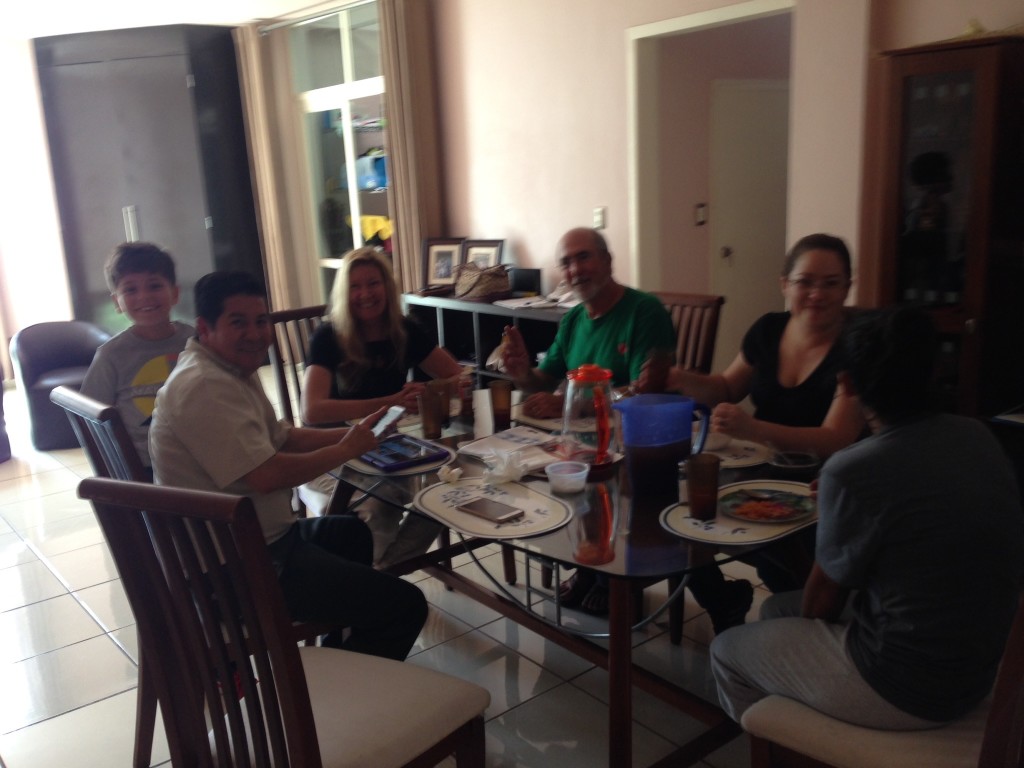
Having Barbara and us over for comida at the home of Mario and Norma, with their two house assistants
Aside from the lovely visit we had with Mario and family, and the surprise visit from Barbara, we werent that impressed with Guadalajara. Maybe it was the construction going on in the historic center, but we just didmt see all the charm that others reported about the city center. It is big, and there are a number of historic government buildings along several blocks of public plazas, but somehow we weren’t impressed. Guadalajara has always been considered Mexico’s second greatest metropolis, only surpassed by Mexico City, and its colonial architecture was supposed to be impressive. But all we saw was a large dirty city under construction. Still, it is the largest big city near to the western coast of Mexico where our boat is, so it is likely we will return.
And so went our several week inland tour of Mexico. Not long after this, we were back inland to Morelia and Patzquaro for Dia da los Muertos on November 1st. Meanwhile, however, we experienced a hurricane threat to Cool Change, sans Rick. And the adventure continues.

